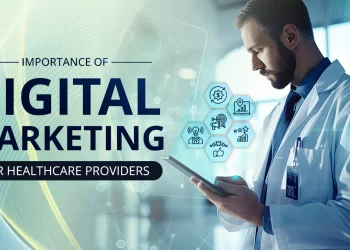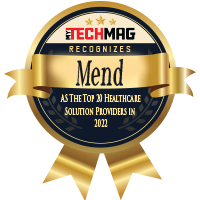Although there was already tremendous progress in the field of health IT before the COVID-19 pandemic, it was never prepared to deal with a crisis on such a massive scale. The covid-19 crisis sped up the digital transformation of health IT by at least ten years. Developments expected to arrive by 2030 arrived in 2021 as the pandemic reshaped the policy around healthcare technology. Now that the healthcare system adjusts to the new normal and implements sustainable and more sophisticated business models, below are some significant trends and changes that will dominate the post-covid-19 world.
The wearables-driven IT market will expand further.
Healthcare wearables powered by artificial intelligence and machine learning will enhance treatment protocols and clinical research even more and increase the virtual care capabilities of healthcare providers. As a result of this, traditional healthcare organizations will have to step up to compete with emerging virtual and retail providers in ways that have never been experienced before.
The growth of the IT-driven wearables market will continue to experience growth as individuals strive to boost their immunity and work-from-home trends pick up.
Increased focus on providing more convenience to the patients.
We are ushering in an era where healthcare organizations will be working very hard to offer patients an unprecedented level of convenience. This would mean moving from traditional ways of diagnosis and treatment to clinical lab-grade diagnostic and on-the-spot teleconsultation and reimbursement processing. Very soon, this all will be possible in a single patient visit, improving patient’s convenience and satisfaction even more.
Today, several test developers like Mammoth Biosciences and Sherlock Biosciences are close to achieving the goal of around $15 per test with a turnaround time of less than fifteen minutes. Companies like Oracle and SAP are offering high-grade data integration and connectivity. The new model will surely be a boon for high-risk patients as it will reduce the lab burden, improve patient convenience, and have long-term advantages like rapid clinical trial recruitment.
Remote monitoring to redefine non-hospital and at-home care.
Remote patient monitoring with the help of new technologies enables medical and other health data to be collected from individuals located at different places. Oura, for example, developed a wearable smart ring to monitor early signs of Covid infection. In 2021 and years to come, we will see more remote monitoring innovations to offset healthcare limitations and bring out the best healthcare delivery for all times.
Virtual consultations will witness phenomenal growth.
The virtual care industry saw unprecedented growth last year. This trend will likely continue this year and beyond. Also, the options for virtual care will expand as virtual care becomes more mainstream. Teladoc, for instance, has moved to expand telehealth capabilities into virtual assistants and robotics that will support healthcare workers.
Automated screening, triage, and routine care use cases will move beyond prescription refills, and urgent care and healthcare will witness virtualization to a large extent. Also, aggressive onboarding of doctors, the evolution of regulatory models, and rapid scale-up by vendors will ensure the virtual care becomes the new standard of healthcare.
Development of a more remote-first solution.
As remote care becomes a part of the new normal, we are expected to see more development of ‘remote first’ solutions that will enable clinical care from just about anywhere.
Health IT will develop more technologies that will be developed as remote-only solutions and evolve from there. In times of covid crisis, healthcare organizations could deliver remote care and assistance using new technologies and remote teams. In the coming years, remote care will be about how the new agility is leveraged, and a better experience is brought to patients and healthcare workers.
The future will be more about how remote care can be agile enough to adapt to the next health crisis or any other adverse event. The challenges of COVID-19 have pushed the healthcare industry to think differently, and it’s going to remain that way from now onwards.
The exponential growth in the use of data.
Over the next five years, there will be tremendous growth in the use of data in improving and sustaining the health of individuals and communities. Large-scale data collection, standardization, and collaboration will provide a roadmap for better care in the future.
Applying data science will give birth to new models for earlier risk detection, clinical trials, more accurate diagnosis, better treatments, and faster drug development. This will ultimately cause an improvement in operations, acceleration of value-based care, and enhance models that foster collaboration in the healthcare industry.
AI will enhance EHRs.
Doctors and healthcare organizations will no longer have to feed information into Electronic Health Records manually in the coming years. Instead, artificial intelligence will capture all the pertinent information from the patient-physician encounter and automatically make the required entries. This will allow doctors to focus more on the patients instead of worrying about placing orders in a computer system or writing notes.
Boundaries between “real” and “virtual” will diminish.
While the COVID-19 pandemic accelerated digital transformation in healthcare faster than ever before, we have still just scratched the surface. In the years to come, remote healthcare monitoring technology, Artificial Intelligence, coupled with more advanced innovations in patient engagement, will streamline access to care so much so that the boundaries between digital health and in-person care will diminish.
We’ll reach the point where there will be new partnerships among companies. For example, care delivery platforms and genetic analysis companies will come together to remove friction and make healthcare even more cost-effective and seamless.
AI and ML will revolutionize every aspect of healthcare solutions.
Artificial Intelligence and machine learning are poised to revolutionize healthcare research, healthcare operations, how patients are supported to maintain health, and the delivery of medical care. AI has already become an integral part of various healthcare processes, systems, and apps today. Therefore, the field of healthcare is primed for AI expansion. The use of AI and ML will not just be restricted to support activities, such as basic screening of diseases; it will bring a tremendous amount of value across the current healthcare continuum to the delivery of improved outcomes.
[Also Read: Artificial-intelligence trends 2021- What positive changes to expect?]
Last but not least, cybersecurity will become more of a focal point.
As a result of increased data sharing, technology use, the continuation of remote work, along with the vaccine rollout effort, cybersecurity will take center stage and become a priority for healthcare organizations. This enhanced focus on cybersecurity will lead to the proliferation of technology safeguards in 2021.
These were some trends which we thought will be prominent in the coming years. What’s your prediction? We’d love to know.








